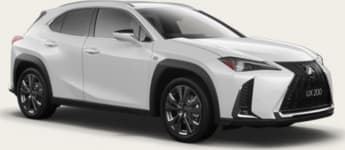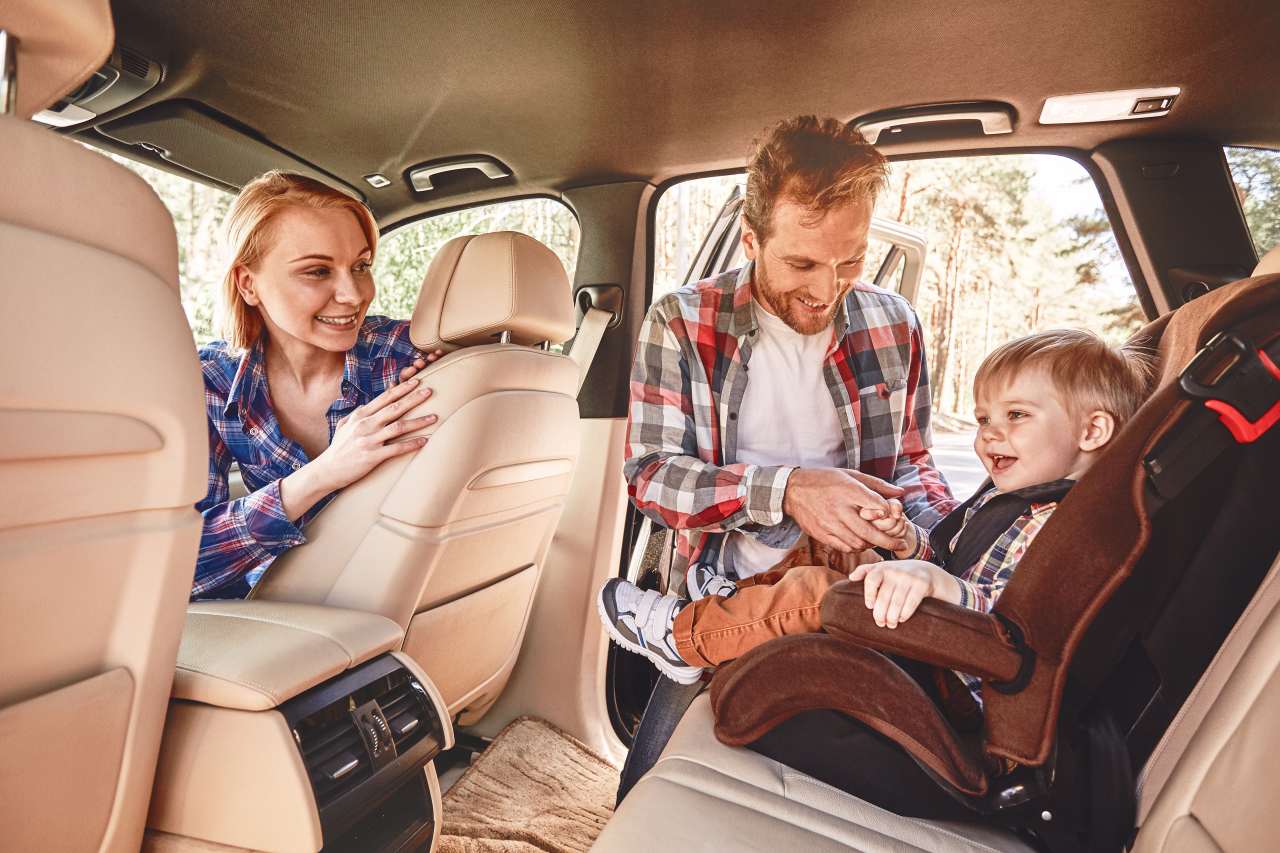Lexus UX200 2021: Luxury
| Engine Type | Inline 4, 2.0L |
|---|---|
| Fuel Type | Unleaded Petrol |
| Fuel Efficiency | 5.8L/100km (combined) |
| Seating | 5 |
| Price From | $36,740 - $43,780 |
| Safety Rating |
|
Part 1: July 1, 2021
Lucky you. Here’s a long-term test with a difference. Not only do you get a review of the Lexus UX over an extended period of time, you also receive a mini-comparison test – totally free of charge.
That’s because my review of the Lexus UX spans two powertrains: the petrol-powered, front-wheel drive UX 200 and its hybrid front-wheel drive twin, the UX 250h. Both in the entry-grade 'Luxury' specification.
The UX 200 will be covered in this first instalment, while the UX 250h will follow up in the next one.
So, what’s a Lexus UX? The UX is the smallest SUV model made by Lexus, measuring 4495mm long, 1840mm wide (not including mirrors) and 1520mm tall. Rivals are things like the BMW X1 and Mercedes-Benz GLA.

The UX has the big Lexus family face with its ‘Spindle’ grille and Nike swoosh LED daytime running lights. And as with every Lexus it gives off a high-end air that challenges its rivals' conservative styling.
The Lexus UX’s interior, even in the entry-grade Luxury, is posh, modern, and stylishly different with a large media screen, varying textured surfaces and plush comfortable touch points under the elbows and on the steering wheel, and there are those sumptuous seats.
The design feature I like most is fins on the tail-lights, joined by a continuous LED strip. Have a look at the images.
The thing I don’t like the most is the 'Remote Touch' media control pad. The frustration this has caused me can’t be quantified.

Imagine the worst laptop track pad you’ve ever experienced and multiply that by 10. Add a busy and confusing media menu, then think about trying to operate it while driving. It can sometimes be unsafe.
Right, let’s start with the UX 200 Luxury which, on June 18, was first to come to live with my family. The UX 200 Luxury is the most affordable in the range at $44,445. The only option being the 'Khaki Metal' green paint ($1500), paired with the standard 'Rich Cream' interior.
We’re a little family. There’s just three of us: my wife, our six-year old son and me.
We did all the stuff you might do, such as the shopping runs, the school picks-ups, adventures to reptile parks, that sort of thing.

The UX is as small as we would possibly go. If we had two children it’d be too tiny for us because while the interior space is excellent, and it can carry four adults comfortably, it won’t fit all the gear which goes with a couple of kids.
The cargo capacity of the UX 200’s boot is 419 litres and there’s storage under the floor.
Cabin storage is okay, with a big centre console box featuring a double hinge lid, allowing it to be opened from the driver’s or front passenger’s side. But not both sides at the same time – I tried it.
There are big door pockets in the front, but no door pockets in the back. Rear passengers get seat-back pockets on both sides plus a fold-down armrest with two cupholders and there are another two cupholders up front.

Although it's an SUV, the UX has a low ride height, and that meant a bit of bending putting my son into his car seat. A wide entry into the back seats made getting in and out for him easy, though.
Oh, and I kept introducing the doors to the footpath with a 'crunch!' Don’t worry Lexus, there’s no damage, but the chunky plastic side skirts on the doors mean there's no way of opening them far when parked next to a normal height gutter without butting into it. Bit of a design fault, I reckon.
With a list price just under $45K, the UX value equation is darn good compared to its prestige rivals. Coming standard is a 10.3-inch media screen, sat nav, an eight-speaker stereo, digital radio and a CD/DVD player (yes, you read that right).
You know I’m not a fan of the media screen menu and touch pad, but there are features which make life easier and more comfortable.

The proximity key means not having to take the fob out of your pocket to lock and unlock the car; the illuminated entry lighting is great for shining the way for a six-year-old climbing out in the dark; and heated seats through winter make it feel like driving in a hot bath... with clothes on.
The UX 200’s engine is a 2.0-litre four-cylinder petrol making 126kW/205Nm. Those outputs are completely normal for a little SUV at this price, and plenty for city driving and overtaking on motorways. Acceleration isn’t bad at all with 0-100km/h arriving in 9.2 seconds.
When it comes to driving, the strength of the UX is comfort. So much so that on any trip my wife pushed for the UX over other cars I was testing. It’s that comfortable, and it’s quiet.
Adding to that ride comfort is accurate steering with a good feel to it, and great visibility all around.

The UX 200 has LED headlights, a big plus as they’re brighter than the halogen lamps on many small SUVs. There’s also a decent level of advanced safety tech, including AEB with pedestrian and cyclist detection.
In terms of fuel consumption, the trip computer hovered around 7.5L/100km most of the time. But we tested this at the fuel pump and measured 8.1L/100km. That’s mainly city driving with the occasional weekend motorway trip.
The UX 200 Luxury was our family car for six weeks and the big takeaway is how comfortable it is. I wouldn’t recommend it to a family with two kids, but it proved (just) big enough for the three of us. And because we live in the city the small size made it easier to hook a park out the front of our apartment each day.
If you’re a couple, or a lone wolf, the UX 200 is going to suit you well, with space to comfortably carry two adults in the back.

We handed the UX 200 back and in return were given almost exactly the same car. A UX, but this time the hybrid 250h, in the same Luxury grade.
The changeover happened just as Sydney went into a COVID-19-induced lockdown. With a 10km travel radius in place, this was going to be a very different test to the UX 200. No reptile park adventures for this one.
You can read all about our long-term short-trip test of the UX 250h in the next instalment.

Acquired: June 2021
Distance travelled this month: 489km
Odometer: 1687km
Average fuel consumption for this month: 8.1L/100 (measured at the pump)
Part 2: August 12, 2021
In the first instalment of this two-part long-term review the Lexus UX 200 Luxury came to stay with my family for a month.
We all became very close over hundreds of kilometres discovering we liked the UX 200 Luxury for its comfort, good value and how it looked.
We weren’t big fans of the media system and its touch pad controller, we also found it pretty heavy on petrol and storage could have been better.
At the end of the month we said hooroo to the UX 200 Luxury and hello to its hybrid twin the Lexus UX 250h Luxury.

It was around this time that Sydney went into a COVID-19 lockdown followed by a 10km radius travel restriction. And this second and final instalment of our long-term review of the Lexus UX 200 and 250h begins on that sunny note.
Just to be totally superficial, I missed the 'Khaki Metal' green paint of the UX 200 and the 'Caliente Red' of the UX 250h just didn’t do it for me.
The difference in interior upholstery is harder to spot. The UX 200 had the 'Rich Cream' colour, while the UX 250h had 'White Ash' which has black inserts into the back supports of the front seats.
The UX 250h Luxury lists for $52,025, which is about $8K more than its petrol-only UX 200 Luxury twin. The extra cost is not just giving you a hybrid system but more features, too.

Here’s what you get on the UX 250h that you don’t on the UX 200: LED fog lights, roof rails, a proximity key, digital radio, blind-spot monitor, parking support brake (PKSB), rear cross traffic alert, a power tailgate, wireless phone charging, cornering LED headlights, alloy scuff plates, headlight washers and privacy glass.
There’s a stack of extra stuff there thanks to a model update at the end of 2020 which made the 'Enhancement Pack 2' part of the standard equipment list.
That’s on top of all the standard features also found on the UX 200 including a 10.3-inch media screen with Apple CarPlay and Android Auto, sat nav, eight-speaker stereo, and a CD/DVD player.
You can keep your power tailgate and headlamp washers, but the additional advanced safety technology such as the blind-spot warning and rear cross-traffic alert would make me opt for the UX 250h Luxury over the UX 200 Luxury.
Other standard safety features on both include AEB with pedestrian and cyclist detection, eight airbags and adaptive cruise control. For child seats there are three top tether anchor points and two ISOFIX mounts.
The UX scored the maximum five-star ANCAP rating in 2019.

In terms of practicality the wireless charging that comes standard on the UX 250h is brilliantly convenient (you don’t get that on the UX 200), another ‘life-easier’ bonus is the proximity key and roof racks, which you won’t know you need until you need them.
Like the UX 200 the 250h also has two USB-C ports up front and another two in the rear. There are directional air vents in the back, too.
As I said in the first part of this long-term review, our family wouldn’t go any smaller than the UX, not that Lexus make anything tinier.
The interior space is good for people, although cabin storage could be better with no door pockets in the rear.
But it’s the boot which was too small and the 383 litres of cargo space in the UX 250h is 36 litres less than the UX 200’s luggage capacity. You can blame the hybrid’s batteries for eating into the cargo room.

That said, the main reason you’d buy the UX 250h is because it’s a hybrid and that not only means better fuel economy over the UX 200 but a better driving experience, in a couple of ways.
To be clear, the UX 250h is not a plug-in hybrid, instead its batteries are recharged through regenerative braking and they in turn power an electric motor which works together with a four-cylinder petrol engine.
The motor makes 80kW/202Nm, while the engine produces 107kW/188Nm. Lexus doesn’t say what the combined output is, but it’d surely be more than the 126kW/205Nm of the petrol engine in the UX 200.
The hybrid feels a lot swifter and there are figures to prove it. The UX 200 can run from 0-100km/h in 9.2 seconds while the UX 250h (front-wheel drive) is almost a full tick of the clock quicker at 8.5 seconds.
The UX 250h’s acceleration has a nice, torquey little shove to it thanks to the electric motor which adds more confidence to overtaking, merging, and pulling out into the traffic from a parking space.
Coasting around under just electric power too, in traffic and car parks is a more serene experience than chugging along burning petrol at 5.0km/h, too.
The smoothness a hybrid system adds to driving can’t be understated. Toyota has mastered the technology and it’s the same system is across its Lexus luxury brand, with seamless transitions from engine to motor.

A continuously variable transmission (CVT) in a purely petrol car like the UX 200 saps, not just oomph, but a lot of fun out of driving with the way it seems to struggle to get the power to the road.
A CVT in a hybrid, however, makes sense because there are no jerky gear changes, just one never-ending, flexible gear.
My UX 250h was front-wheel drive, but it also comes in all-wheel drive for about $5K more.
I mentioned earlier that the UX 200h arrived just as Sydney was going into a lockdown that would last months and restrict travel to a 10km radius at first.
So, the UX 200h became my essential travel vehicle. The car I took into battle for masked up grocery shopping, hoping the supermarket wasn’t going to be on another exposure site list. I won’t forget that.
It was the car I drove my son to the park in while trying to home school at the same time as he learnt to read from the back seat sounding out the words.
And it was the car I headed off in to get my vaccination. I will never forget these times.
The last type of car I needed was something that might make these tough times even harder. Something enormous, with a manual gearbox could have been the last straw.
Truth be told I was testing a Toyota Supra GTS at the time, but this little Lexus was so easy and comfortable to drive that it was my go-to car because I didn’t have to think about the process of driving, just what I needed to do next.
I looked forward to its heated, comfortable seats and the serene way it slid along under electric power. And when I needed to move quickly it was able to do that too.

Great steering (a Toyota thing), that comfortable ride and good visibility with a slightly elevated driving position. Pedal feel is the one thing that could be better.
As with every hybrid I’ve driven the brake pedal feels a bit wooden and that’s because of the regenerative system. But you’ll get used to it, as I did.
Over the past 43 days the UX 250h travelled 249.2km and my fuel consumption was 5.9L/100km.
Lexus says after a combination of open and urban roads you should see 4.3L/100km, but considering I live in the city and was nowhere near an open road, that real-world economy number is excellent.
The UX 250h's frugality is also clear when you compare it to the petrol-only UX 200 which I drove a month earlier, which, despite the motorways, used 8.1L/100km.
Acquired: July, 2021
Distance travelled this month: 249.2km
Odometer: 2811km
Average fuel consumption for July-August: 5.9L/100 (measured at the pump)

Verdict
That ends our long-term test of the UX 200 Luxury and UX 250h Luxury. The pick for me, without a doubt, is the hybrid.
Yes, it's a tad more expensive, but you're getting some great features such as the privacy glass, proximity key and safety tech.
However, the big reason for paying more is for the hybrid system, which saves fuel and makes the driving experience even better.
Pricing Guides






.jpg)











































 copy.png)













.jpg)
.jpg)
.jpg)



.jpg)

.jpg)
.jpg)
.jpg)
Comments